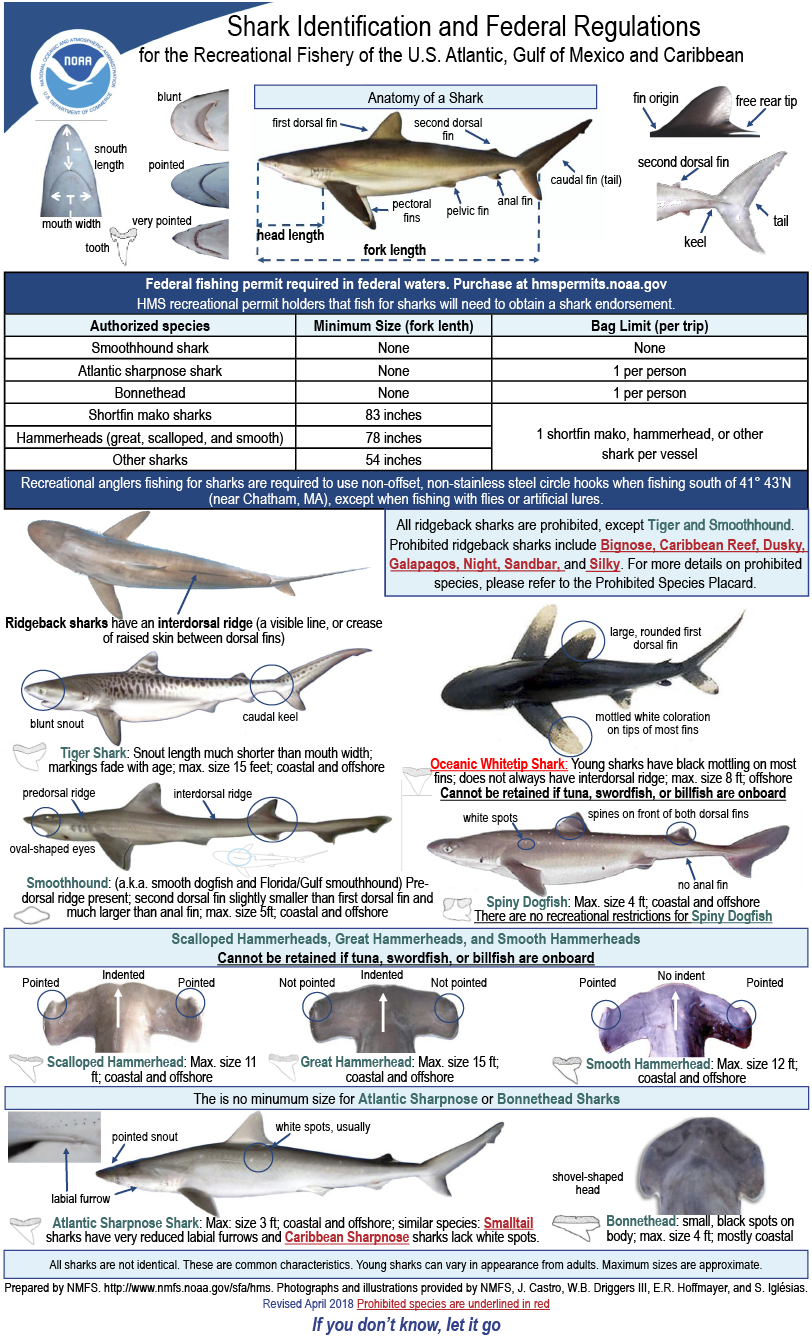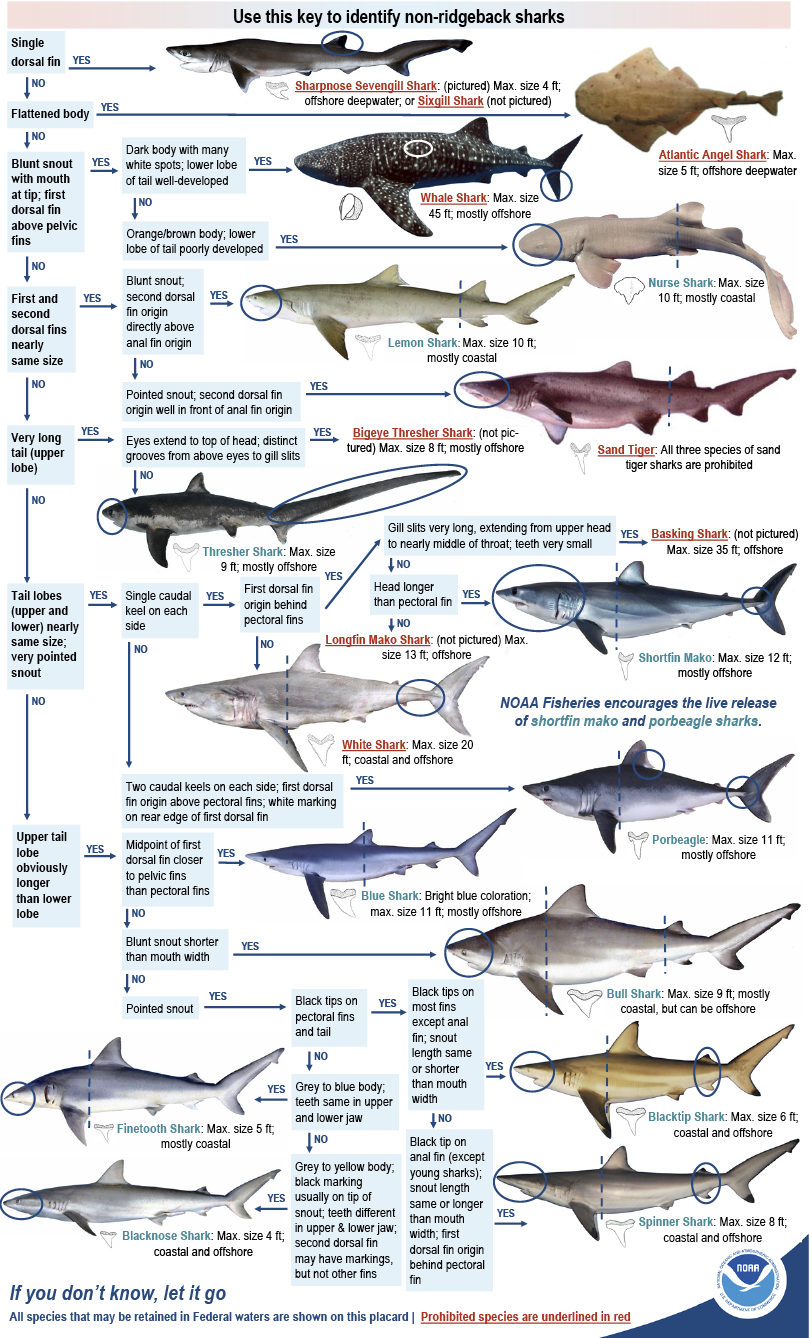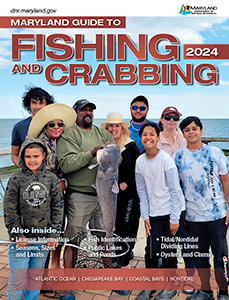Sharks
Season, Harvest Restrictions, Minimum Size and Daily Creel/Possession Limits |
||||
Shark Species Approved for Recreational Harvest* |
Season |
Minimum |
Daily Creel Shore* (Per angler) |
Daily Creel Vessel* (Per trip) |
Atlantic Sharpnose Shark, Bonnethead Shark |
Open Year Round |
None |
Each recreational shore angler is allowed a maximum of 1 shark per calendar day from this list of approved species. In addition, each recreational shore angler may harvest 1 of each of the following species per calendar day: 1. Bonnethead 2. Atlantic Sharpnose shark |
Each recreational vessel is allowed a maximum of 1 shark per trip from this list of approved species. In addition, each recreational angler may harvest 1 of each of the following species per trip: 1. Bonnethead 2. Atlantic Sharpnose shark |
Blacknose Shark, Blue Shark, Common Thresher Shark, Finetooth Shark, Porbeagle Shark |
Open Year Round |
54 inches |
||
Blacktip Shark, Bull Shark, Lemon Shark, Nurse Shark, Spinner Shark, Tiger Shark |
Open Year Round Except May 15–July 15 |
54 inches |
||
Great, Scalloped, and Smooth Hammerhead Sharks |
Open Year Round Except May 15–July 15 |
78 inches |
||
Smooth Dogfish |
Open Year Round |
None |
None |
None |
Spiny Dogfish |
Open Year Round |
None |
None |
None |
* - Sharks that are transported by vessel are considered boat assisted, and regulated under the more restrictive vessel-fishing possession limits regardless of where they were caught. All species not listed in the above table, including sandbar, dusky, and shortfin mako sharks, may not be retained and must be released. |
||||
Shark Rules
IF YOU CAN’T OR AREN’T GOING TO KEEP A SHARK:
- You must immediately release it in the water
IF YOU CAN’T OR AREN’T GOING TO KEEP A SHARK YOU MAY NOT:
- Sit on it
- Hold its mouth open
- Put it on dry sand
- Put it on a boat deck
- Use a gaff
MAXIMIZE THEIR CHANCE FOR SURVIVAL:
- Don’t place hands in the gills
- Minimize fight times by using the appropriate gear
- Know how to identify them, “If you don’t know let it go”
- Have a release plan and make sure everyone knows their role
- Cut the line, minimize trailing gear or use a dehooker
Shark Identification “IF YOU DON’T KNOW, LET IT GO”


Maryland manages 41 species of coastal sharks, including spiny dogfish.
Shark management is a joint effort of the State of Maryland, Atlantic States Marine Fisheries Commission, National Oceanic and Atmospheric Administration, and the International Commission for the Conservation of Atlantic Tunas.
Learn to identify sharks with this placard dnr.maryland.gov/fisheries/Documents/shark-id-placard-2018-web.pdf

